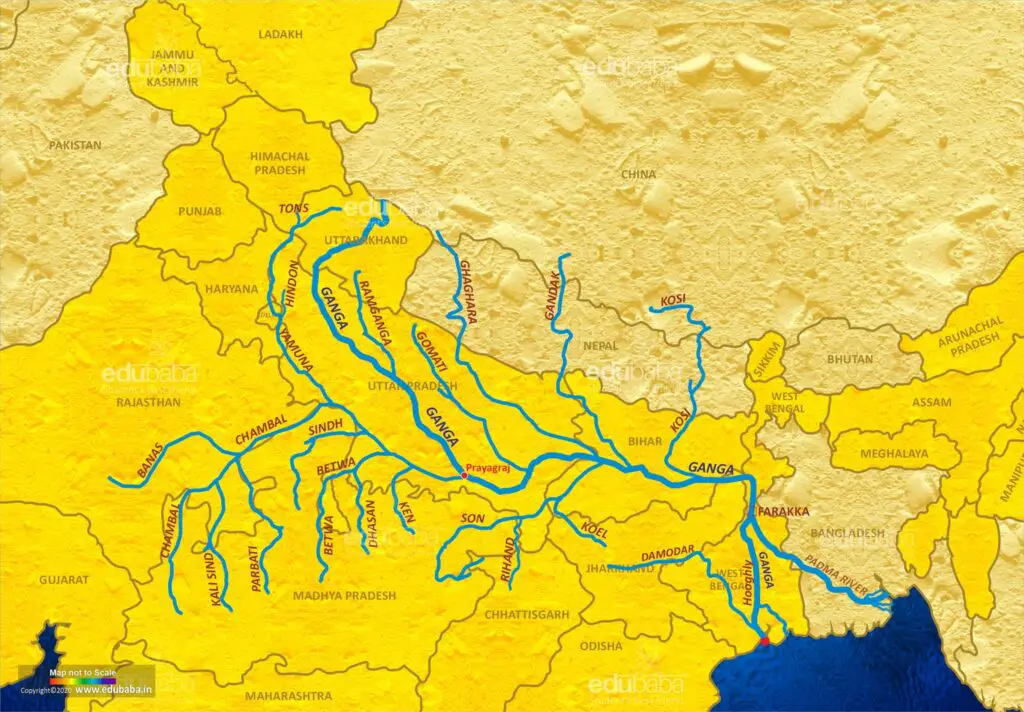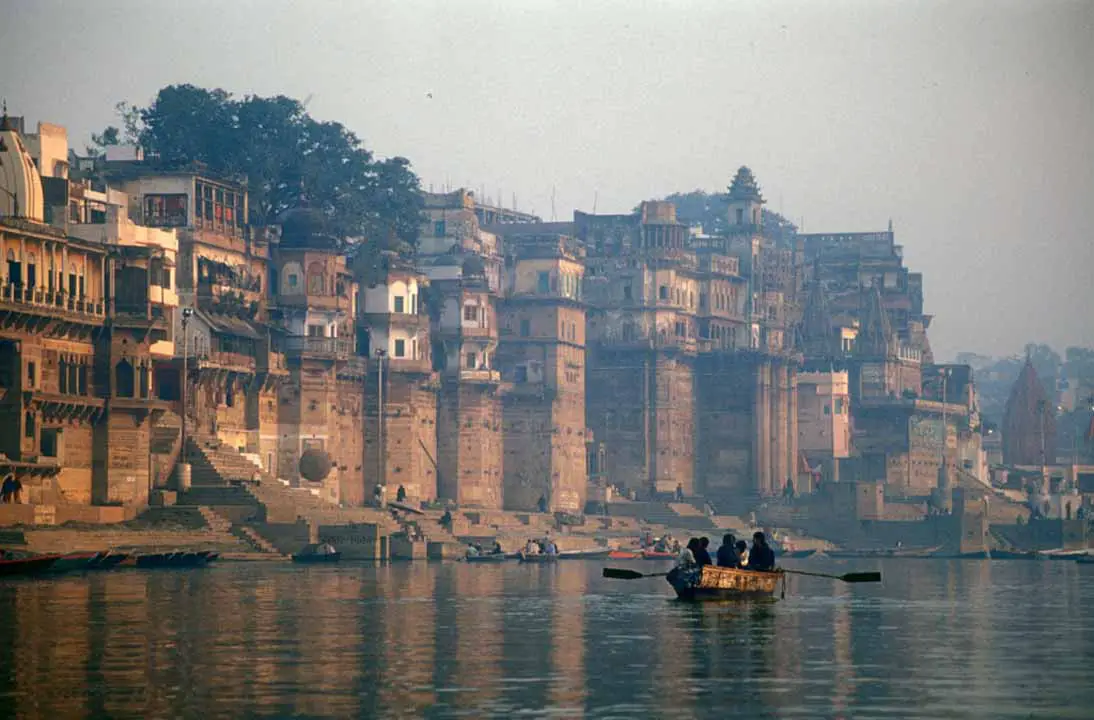Introduction
The Ganga River, also known as the Ganges, has a vast historical, religious, and cultural significance in India. It is among the longest rivers in the world, which flows through various states and supports thousands of inhabitants. This article examines The History of the Ganga River, its importance in many aspects of daily life, its challenges, and the conservation efforts undertaken to conserve this iconic waterway.
Origin and Importance
It is believed that the Ganga River originates from the Gangotri Glacier of the Indian Himalayas and traverses a considerable distance before flowing in the Bay of Bengal. The basin houses many towns, cities, and villages, which makes it an essential source of life for the millions of people who depend on it for food and livelihood. The river’s significance for transportation, agriculture, and hydropower generation cannot be overstated.
Historical Significance
The background of the Ganga River can be traced back to the earliest times and is mentioned in texts of religion, like the Rigveda. It has witnessed the fall and rise of several powerful dynasties, and its banks have witnessed the emergence and expansion of numerous civilizations. The river has seen many historical events and has played a significant part in shaping the cultural infrastructure of India.
Religious Significance
It is believed that the Ganga River holds deep religious significance for Hindus. It is regarded as a sacred river. It is also believed that its waters have cleansing properties. The act of taking a dip in Ganga is considered to be a spiritual cleansing and thought to cleanse sins. The Ganga River has also been associated with many Hindu gods and is a vital element of ceremonies and rituals of religious significance.
Environmental Challenges
Despite its importance as a place of worship and cultural significance, the Ganga River faces numerous environmental issues. The pollution from industrial effluents, sewage discharges, and religious practices have significantly affected water quality. The overuse of water, mining sand, and the deforestation of the area of the river’s catchment are also contributing to the degradation of the river.
Conservation Efforts
Various conservation initiatives have been taken to recognize the need to safeguard and restore the Ganga River. The Indian government introduced 1985 the Ganga Action Plan in 1985, which aimed at reducing pollution and improving water quality. In addition, community-based and NGO organizations have played an essential role in educating people about and taking conservation measures.
Impact on Local Communities
The Ganga River sustains the livelihoods of millions living on its banks. Farmers, fishermen, boatmen, and artisans rely on the river for economic well-being. But pollution and environmental degradation have harmed their communities, impacting their health, livelihoods, and general standard of living.
Cultural and Economic Importance

The Ganga River has been a center of economic and cultural activities throughout the centuries. The riverfront ghats, temples, and pilgrimage sites draw millions of tourists annually. The banks of the river have seen the growth of cities that were once a part of the past, like Varanasi and Haridwar, which are centers of spiritual and cultural tourism. The economic benefits of tourism are significant to local economies.
Tourism and Ganga Aarti
Tourists visiting the Ganga River are a thriving business, drawing travelers from all over the globe. The river’s stunning beauty, historical sites, and religious significance make it a top spot for local and international travelers. Cities such as Varanasi, Allahabad, and Rishikesh have gained fame for their lively culture, old temples, ancient monuments, and tranquil ghats that line the river’s banks.
One of the major tourist attractions is The Ganga Aarti ceremony. The beautiful ritual occurs at night, and priests dance sound and light to honor the river. People who are devoted and curious are gathered on the ghats lighting oil lamps and letting them flow into the river while praying. The sight of thousands of lamps flickering and the heart-warming chants create a fantastic atmosphere that leaves a lasting impression on those who visit.
It is believed that the Ganga Aarti not only serves as a ritual of worship but also displays the rich heritage of culture in India. The beautiful hymns, the constant clacking of bells, and the captivating scent of incense create a beautiful experience that draws the audience into the mystical atmosphere. It offers a unique opportunity for people to be a part of and participate in religious and traditional expertise.
Pollution and Cleaning Initiatives
But the river’s beauty and purity are ruined by pollution. Industrial garbage, untreated sewage, and the soaking of religious and idol worship have impacted the river’s ecological balance. Excessive levels of corruption not only affect the quality of the water and contaminate the water, but they pose a danger to aquatic life and the ecological balance overall.
Several cleaning initiatives have been implemented to tackle this urgent problem. The Ganga Action Plan, initiated by the Indian government, was designed to reduce pollutants and improve the river’s health. The plan has attempted to clean up sewage before it enters the river. Additionally, strict rules have been imposed on industrial facilities to limit waste discharge.
Additionally, awareness campaigns are being launched to educate people on the importance of having a healthy Ganga and the negative impacts of pollution. Participation from the community, which includes residents of the area, NGOs, and volunteers, has played an essential role in completing cleanup drives throughout the rivers. This collective effort aims to bring the Ganga back to its former glory and ensure sustainability for future generations.
Role of Government and NGOs
The restoration and conservation of the Ganga River require a collaborative approach that includes both the government and non-governmental organizations (NGOs). It has also taken significant actions to prioritize the cleaning and protection of the river by allocating funds and implementing policies, and establishing regulatory bodies to monitor the river’s conservation.
The NGOs also have been instrumental in generating the public’s awareness of environmental issues, conducting scientific research, and developing innovative solutions. They closely relate with local communities and engage them in activities to preserve the environment and promote sustainable methods. Non-governmental organizations like Ganga Action Parivar, Ganga River Basin Management Plan, and Ganga Praharis have substantially contributed to conservation efforts.
Future Prospects
Despite the difficulties, there is hope for the river’s long-term future. The constant conservation efforts, paired with the latest technology and greater public awareness, cancan improve the river’s health and ensure its sustainability. The government’s dedication to the cause and the involvement of various stakeholders offers hope for the revival of this waterway that is renowned for its beauty.
Conclusion of The History of the Ganga River
The Ganga River is believed to be an emblem of India’s rich history, cultural heritage, and spiritual practices. Its significance goes beyond boundaries and draws millions seeking peace, tranquility, and a connection with the spiritual. However, its environmental problems, particularly the effects of pollution, pose a significant risk to its health and the well-being of the communities who depend upon it.
Through concerted efforts, such as efforts by the federal government, non-governmental intervention, and community involvement, progress is being made toward restoring the Ganga River to its former splendor. The dedication to cleaning the river, adopting sustainable methods, and increasing awareness of its importance is vital to ensure the survival of this essential river in the future.
As we progress, it is crucial to implement and support conservation measures that address pollution sources and encourage responsible tourism and religions near the river. Considering the river’s historical, cultural, and ecological importance, we can guarantee its protection and sustainable development, ensuring a better future for this famous waterway.
FAQs
- Q What is the religious importance of the Ganga River?
- One of the reasons is that the Ganga River holds great religious significance to Hindus, who believe it to be sacred and cleansing. A plunge in its water is believed to cleanse any sins.
- Q What is the length of the Ganga River?
- One of the most famous rivers in the world is the Ganga River, one of the longest rivers around the globe, extending around 2,525 km (1,569 miles) from its source until its mouth.
- Q: What exactly is this ceremony? Ganga Aarti ceremony?
- The Ganga Aarti is a spiritual ceremony performed on the shores of the Ganga River. It includes priests offering prayers singing hymns, chanting, and lighting lamps as a way of worship.
- Q What are some environmental issues that this river has? Ganga River?
- One of the problems is that the Ganga River faces pollution from industrial waste, untreated wastewater, and religious practices, with other issues like excessive water extraction and sand mining.
- Questions: What conservation efforts have been taken to protect the Ganga River?
- One example is that the Indian government has launched the Ganga Action Plan to reduce pollution. Community-based and non-profit organizations are also involved in awareness-raising and cleanup actions.
Shankar Maharaj History: A Spiritual Journey to Self-Realization


[…] The History of the Ganga River […]